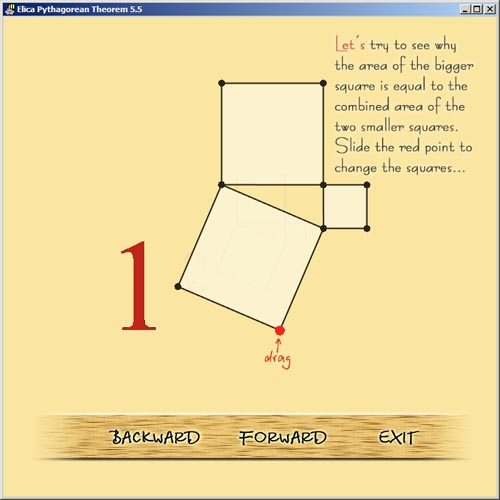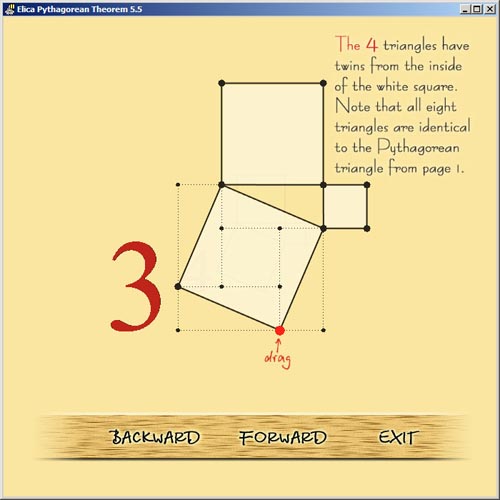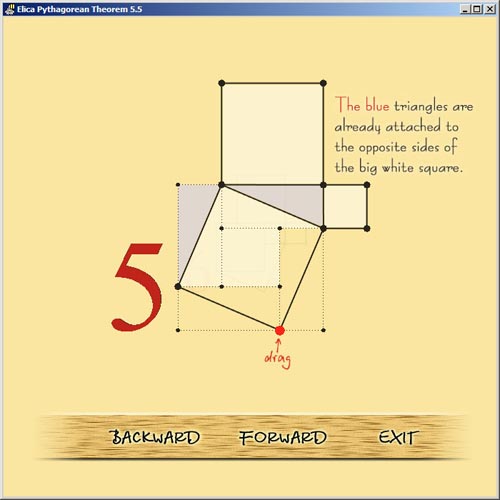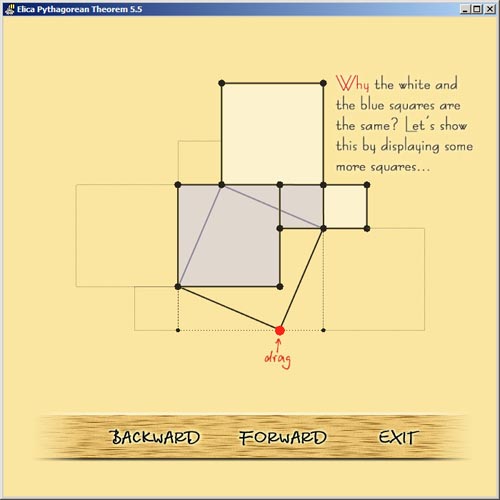



The Pythagorean theorem is named after Pythagoras - a Greek mathematician. The theorem states that:
In any right triangle, the area of the square whose side is the hypotenuse is equal to the sum of areas of the squares whose sides are the two legs
It is still unknown who found this theorem for the first time. Some people think it was discovered several times independently by various scientists. Whatever the truth is, the Pythagorean theorem may have more known proofs than any other theorem. Currently they are several hundreds proofs
This Elica application implements an interactive visual proof of the theorem. The proof is presented in 7 slides. Students can go the the next or the previous slide at any time. To view the proof with various initial configurations the first slide provides a way for the student to drag a parametrization point. The proof displayed in the other slides is automatically synchronized. The parametrization is available in all slides. The proof can be traversed in reversed order – starting from the last slide and going towards the first one
The game is distributed with its Elica Logo source. It can be used to demostrate how to create composite dynamic objects, how to react to to mouse, how to arrange objects in 3D space and then to fly through the scene